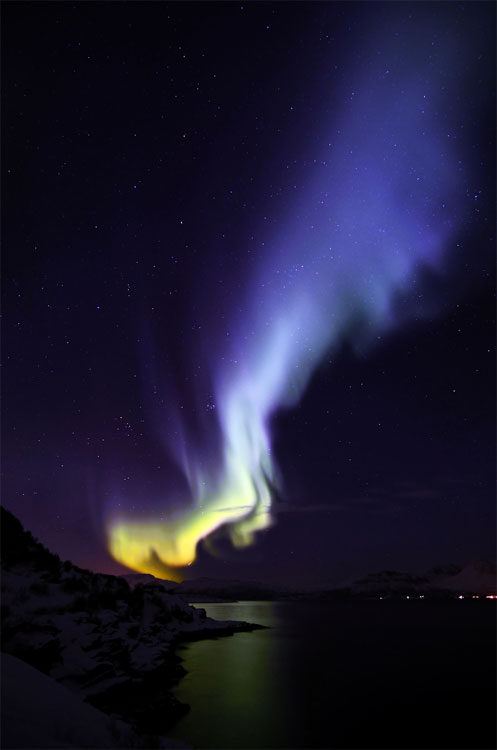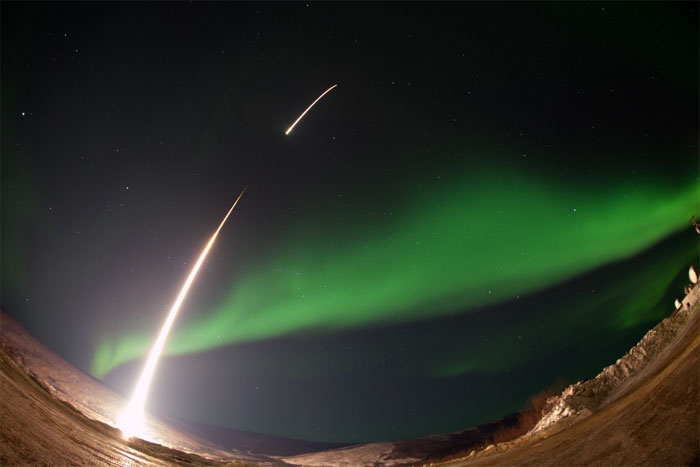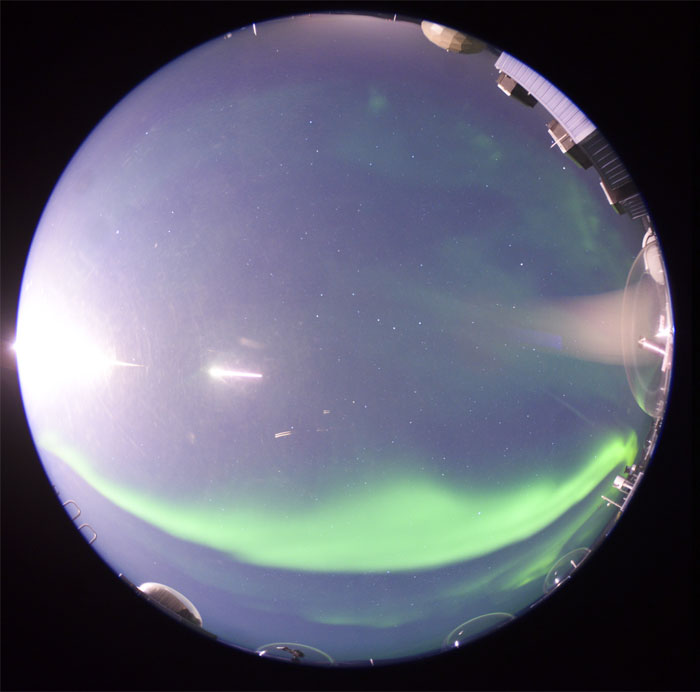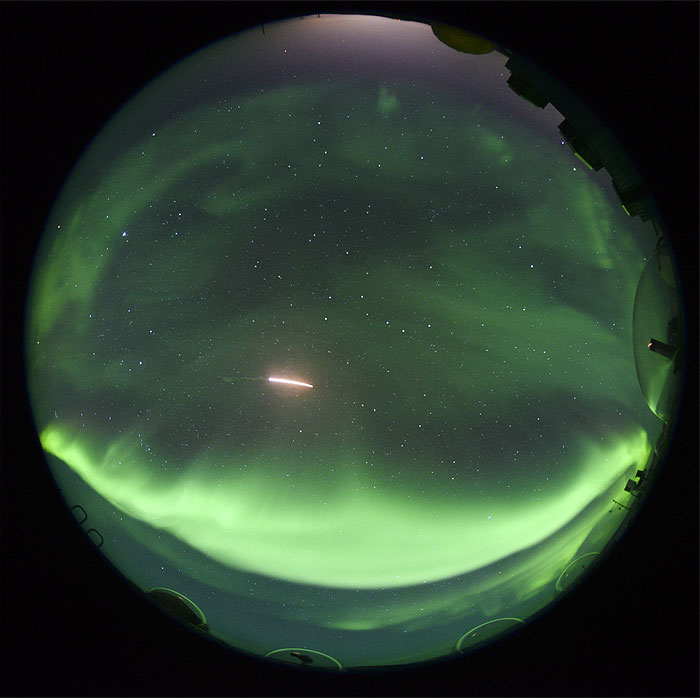NOTES:
- Launch planned from Pad 3 of Poker Flat Research Range, Mile 30, Steese Highway, AK.
- Local time at Poker Flat Research Range is Alaskan Standard Time, AKST (AKST = UT – 9H).
Sun, 02 Mar 2014 (03 Mar 2014 UT) – Night 24
Vertical Check complete, 0412 UT.
Solar wind and IMF conditions are promising this evening as we approach the opening of the window at 0500 UT. The IMF Bz has been southward at around -5 nT for the past 6 hours. Solar wind speed has been dropping slowly from 375 to 350 km/s, concurrent with slow increase in density from around 2 to 6 1/cm^3. The GOES magnetometers indicate somewhat more compression on the dayside today than yesterday, and the downward trends towards the usual minima in the midnight sector are steeper than last night, with at least one downward spike in the 0200 to 0300 UT interval.
As the Sun sets here at PKR and VEN, the Little Red and Little Green Arcs of the North are already apparent somewhat off the northern horizon at both locations, and are faintly visible even to the naked eye in the fading twilight from the SOC.
0703 UT: breakup auroral activity over Canada (Ft. Simpson, Rabbit Lake, Ft. Smith) for the last half hour or so bodes well for activity here at PKR and VEN in perhaps an hour or so. IMF continues southward with somewhat lessened magnitude, running around -2 nT. Red and green arcs remain in the north at PKR and are moving to the south. Aurora at VEN shows a fair number of separate arcs with moderate amounts of structure; still not bvery bright, however.
0723 UT: pick up count at T-10; 0729 UT, still multiple arcs present from just to the north of zenith at VEN up to the northern horizon, fading and brightening, but still relatively faint. 0731 UT: holding at T-2 min. GOES -15 (West) continues jumpy behavior it has evidenced since roughly 0630 UT, with roughly 10 nT peak-to-peak variations. 0741 UT: arcs at VEN have faded further and retreated to the north; recycle to T-10 min.
LAUNCH-LAUNCH-LAUNCH — ~1109:50 UT — LAUNCH-LAUNCH-LAUNCH
Excellent event over VEN ; flight right on in azimuth, ~335-km altitude.
Sat, 01 Mar 2014 (02 Mar 2014 UT) – Night 23
Vertical Check complete, 0424 UT.
It’s a far quieter night here than last night. IMF has been near zero or northward since early in the evening at magnitudes around 3 nT, with the solar wind blowing around 375 km/s at densities around 3 1/cm^3. Both GOES magnetometer traces showed sudden downward spikes between 0000 and 0100 UT, and then have followed relatively smooth trends down toward the midnight sector.
~0920 UT: Little Red and Green Arc of the North brightening in the north at PKR, and is still in the north at VEN. Fades in intensity, 0940 UT. IMF remains northward or near zero after nearly 6 hours.
Scrubbed for the night, 0941 UT.
Quelle: GREECE, Spaceweather
.
BLUE AURORAS: Northern Lights are usually green, and sometimes red. Those are the colors produced by oxygen when it is excited by electrons raining down from space. On Feb. 22nd, Micha Bäuml of Straumfjord, Norway, witnessed an appariton of aurora-blue:
.

.

Quelle: Spaceweather
.
Update: 6.03.2014
.



